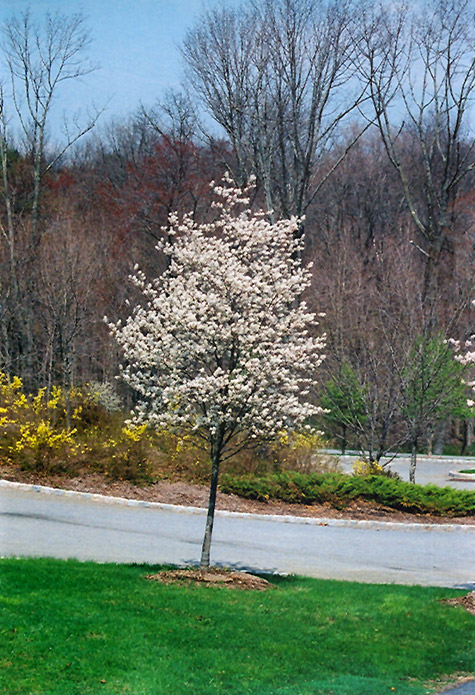Cumulus Serviceberry
Amelanchier laevis 'Cumulus'
Height: 10 feet
Spread: 8 feet
Sunlight:
![]()
![]()
Hardiness Zone: 4a
Description:
A small tree with showy white flowers in early spring and brilliant fall colors, and good growth habit; a great choice for the small home landscape
Ornamental Features
Cumulus Serviceberry is clothed in stunning clusters of white flowers rising above the foliage in early spring before the leaves. It has dark green deciduous foliage. The oval leaves turn an outstanding tomato-orange in the fall. It produces blue berries in late spring.
Landscape Attributes
Cumulus Serviceberry is an open multi-stemmed deciduous shrub with a more or less rounded form. Its relatively fine texture sets it apart from other landscape plants with less refined foliage.
This is a relatively low maintenance shrub, and is best pruned in late winter once the threat of extreme cold has passed. It is a good choice for attracting birds to your yard, but is not particularly attractive to deer who tend to leave it alone in favor of tastier treats. It has no significant negative characteristics.
Cumulus Serviceberry is recommended for the following landscape applications;
- Accent
- Mass Planting
- General Garden Use
- Naturalizing And Woodland Gardens
Planting & Growing
Cumulus Serviceberry will grow to be about 10 feet tall at maturity, with a spread of 8 feet. It has a low canopy with a typical clearance of 2 feet from the ground, and is suitable for planting under power lines. It grows at a medium rate, and under ideal conditions can be expected to live for 40 years or more. While it is considered to be somewhat self-pollinating, it tends to set heavier quantities of fruit with a different variety of the same species growing nearby.
This shrub does best in full sun to partial shade. It prefers to grow in average to moist conditions, and shouldn't be allowed to dry out. It is not particular as to soil type or pH. It is somewhat tolerant of urban pollution. This is a selection of a native North American species.








